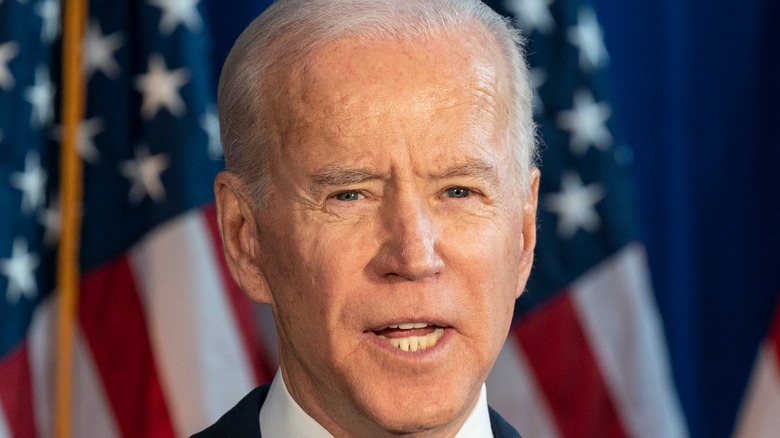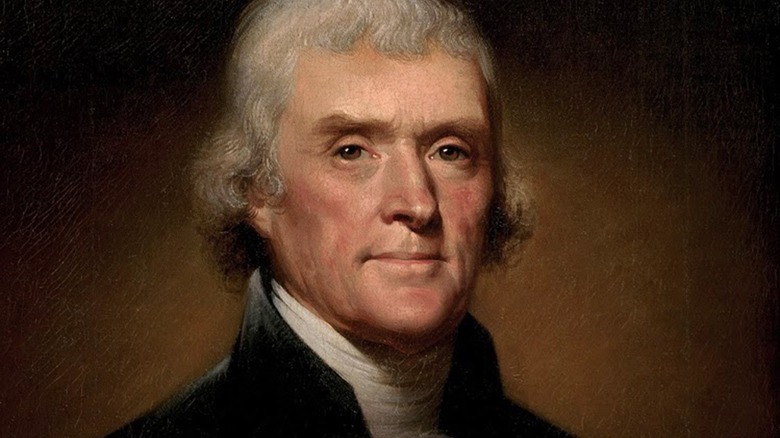Here's Why The President Delivers A State Of The Union Address
The State of the Union address is one of the biggest events on a president's calendar. It's their chance to address both lawmakers and the nation, lay out their plans for issues facing the United States, and give updates on ongoing initiatives.
The United States Constitution requires the sitting president to offer an update to Congress, which it refers to as a "State of the Union message." According to The American Presidency Project, this can be found in Article II, Section 3 of the Constitution, which reads, "He shall from time to time give to the Congress Information of the state of the union, and recommend to their consideration such measures as he shall judge necessary and expedient." This required message can come in the form of an address to a joint session of Congress, or it can be delivered as a written message.
There is a discrepancy in that an address or written message given by a president in the first year of their first term is not technically considered a State of the Union address or message, but those instances are often included in discussions and research because their virtually indistinguishable from a true State of the Union address.
Spoken address or written message?
According to The American Presidency Project, State of the Union addresses started with George Washington, and he established a precedent of annual messages as the Constitution only stipulates that Congress should be updated with a State of the Union address "from time to time."
Washington gave in-person addresses, and so did John Adams, but Thomas Jefferson bucked the trend, instead opting for written messages. It's not completely known why he made this change, but it's thought to have been because he thought having the president address Congress was too similar to how Great Britain's monarch addressed Parliament. Jefferson's first State of the Union in 1801 was a written message, and after that, all of them were through William Howard Taft's 1912 State of the Union.
Woodrow Wilson was the first president in over a century to deliver a spoken State of the Union address to Congress. For the next few presidents, the choice of spoken or written messages varied, but after Franklin D. Roosevelt took office, most have been spoken addresses (though some presidents have issued both spoken and written messages in the same year).

